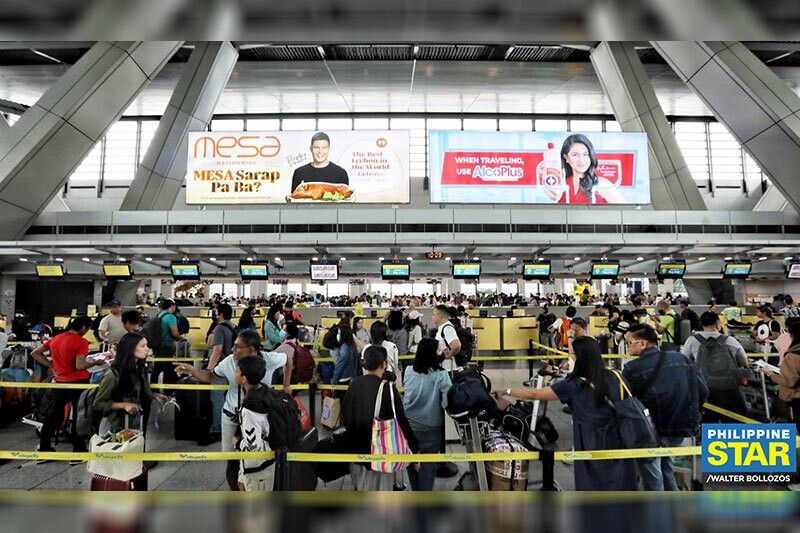Travel goals


A large number of friends and acquaintances are spending the holidays abroad. They have either left early or are preparing to leave for cooler December climates in Japan, the United States, Europe and other destinations.
So it is not really surprising to learn that overall, travel numbers are increasing and are in fact nearing pre-COVID figures. Revenge travel continues.
The ongoing recovery in passenger demand continued in October, according to the International Air Transport Association (IATA), and all indications point to this upward trend remaining.
According to IATA director general Willie Walsh, October’s strong result brings the industry ever closer to completing the post-pandemic traffic recovery.
IATA’s latest report revealed that total traffic in October, measured in revenue passenger kilometers or RPKs, rose by 31.2 percent compared to the same month last year. Globally, traffic is now at 98.2 percent of pre-COVID levels.
Domestic traffic for the month rose by 33.7 percent versus October 2022, driven by the triple-digit percentage growth recorded in China while international traffic climbed by 29.7 percent compared to the same month a year ago. All markets saw double-digit percentage gains year on year and international RPKs reached 94.4 percent of October 2019 levels, the report disclosed.
Walsh pointed out that domestic markets remain above pre-COVID levels while international demand is recovering, but more slowly. He noted that in particular, Asia Pacific carriers’ international demand is 19.5 percent behind 2019 which could be reflecting the late lifting of pandemic restrictions in parts of the region as well as commercial developments and political tensions.
In the international passenger market, Asia-Pacific airlines saw an 80.3-percent increase in October 2023 traffic compared to October 2022 as it continued to lead the regions. Capacity went up 72.5 percent while load factor increased by 3.6 percentage points to 82.9 percent, the report said.
And as a result of increased travel, IATA also announced higher financial results for the airline industry.
Airline industry net profits are expected to reach $25.7 billion in 2024 or a 2.7 percent net profit margin, which will be a slight improvement over 2023 which is projected to show a $23.3 billion net profit and a 2.6 percent net profit margin.
Industry operating profits in 2024 are seen reaching $49.3 percent from $40.7 billion this year. Total revenues next year meanwhile are expected to grow 7.6 percent year over year to a record $964 billion while expense growth is projected to be slightly lower at 6.9 percent.
IATA said that some 4.7 billion people are expected to travel in 2024, a historic high that exceeds the pre-pandemic level of 4.5 billion recorded in 2019.
Let’s hope that a good number of these international travelers would find their way to the Philippines.
Walsh said that considering the major losses of recent years, the $25.7 billion net profit expected in 2024 is a tribute to aviation’s resilience, adding that the speed of the recovery has been extraordinary yet it also appears that the pandemic has cost aviation about four years of growth.
But he also pointed out that while the recovery is impressive, a net profit margin of 2.7 percent is far below what investors in almost any other industry would accept.
Walsh explained that there is something to be learned from the fact that on average, airlines will retain just $5.45 for every passenger carrier which is about enough to buy a basic grande latte at a London Starbucks.
Overall revenues in 2024 are expected to increase faster than expenses at 7.6 percent compared to 6.9 percent, strengthening profitability. IATA noted that while operating profits are expected to increase by 21.1 percent next year, net profit margins increased at less than half the pace at 10 percent largely due to higher interest rates expected next year.
IATA revealed that industry revenues are expected to reach a historic high of $964 billion in 2024. Passenger revenues are anticipated to hit $717 billion in 2024 or 12 percent higher. The same report said that RPK growth is seen growing 9.8 percent year on year. It said that while it is more than double the pre-pandemic growth trend, 2024 is expected to mark the end of the dramatic year-on-year increases that have been characteristic of the recovery in 2021-2023.
The industry association added that high demand for travel coupled with limited capacity due to persistent supply chain issues continues to create supply and demand conditions supporting yield growth, with passenger yields next year expected to improve by 1.8 percent compared to 2023.
IATA’s November 2023 passenger polling data also support the optimistic outlook.
A third of travelers polled say they are traveling more than they did pre-pandemic while some 49 percent indicate that their travel habits are similar to pre-pandemic. Only 18 percents said they were traveling less.
The same poll also showed that 44 percent say they will travel more in the next 12 months than in the previous 12 months. Only seven percent say they will travel less while 48 percent expect to maintain similar levels of travel.
But IATA recognized that industry profitability is fragile and could be affected by many factors, including global economic developments, war, supply chain issues, and regulatory risk among others.
Tourism not only creates jobs but also encourages growth in other industries. This is known as the multiplier effect which basically refers to how many times the money spent by a tourist circulates through the host country’s economy.
One report explained that money spent by a tourist in a hotel for instance not only helps create jobs directly in the hotel abut also creates jobs indirectly elsewhere in the economy like when the hotel has to buy food from local farmers who may in turn spend some of this money on fertilizers or clothes or when a hotel employee who earns a salary spends money on goods and services which creates additional economic activities. The demand for local products also increases as tourists buy souvenirs, which increases secondary employment.
And this tourism multiplier effect is especially important for countries like the Philippines that rely heavily on tourism as a source of revenues.
For comments, e-mail at [email protected]
- Latest
- Trending





























